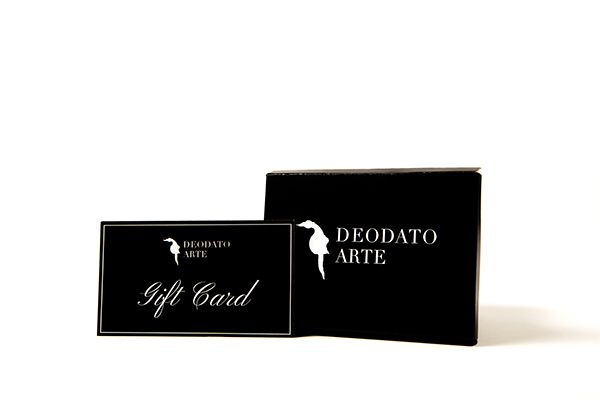
Thank you!

Robert Indiana

Robert Indiana: Art for Sale at Deodato Arte - The rhetoric of the American dream has always influenced Robert Indiana's artistic production along with the search for simple but universally recognized words so that anyone can understand his artworks.
Robert Indiana's most iconic artwork is certainly Love, first made in 1964 but there are other major works such as Hope and Eat/Die.
Robert Indiana - Biography of the Pop Art Artist
Robert Indiana was born in New Castle in 1928 and has been a leading figure in the American Pop Art movement since the 1960s. Indiana played a central role in the development of assemblage, hard-edge and pop art.
A self-proclaimed American sign painter, Indiana created highly original art that explored American identity, his personal history and the power of abstraction and language. He established an important heritage that echoes in the work of many contemporary artists where writing is a central element of artistic production.
Robert Indiana quickly established himself as one of the most creative artists of his generation, which led him to appear in New York's most influential art exhibitions as early as the 1960s. In 1961, the Museum of Modern Art (MoMA) acquired The American Dream, I (1961), the first in a series of paintings exploring the illusory American dream, establishing Indiana as one of the most important members of the new generation of pop artists. Robert Indiana also worked with the founder of the Pop Art movement, Andy Warhol, for whom he starred in the film Eat in 1964.
His works are shown in several solo and group exhibitions as well as in the collections of some of the world's most important museums such as the Museum of Modern Art and the Whitney Museum of American Art in New York, the National Gallery of Art and the Museum of Modern Art in San Francisco.
Robert Indiana died in Vinalhaven in 2018 at the age of 90.
Robert Indiana Art and the Style of the Painted Word
Robert Indiana began early in his career to develop an interest in the incorporation of words within sculptures and paintings. Like many of his contemporaries in the 1960s and 1970s, Indiana's artwork was a consequence of a modern world dominated by mass media. Within his works we find emblematic words reproduced with the use of stencils, letters and numbers associated with solid colours and symmetrical geometric shapes.
Just as in advertising, Indiana's message, which is often summed up in a catchphrase, uses words or phrases to create connections and perceptions in the viewer's mind.
The complex relationship between words and their verbal power becomes increasingly evident when looking at Indiana's work. Indeed, he takes inspiration for his content from the world around him, such as motorway signs, industry moulds and commercial logos.
Robert Indiana - Artworks
The most iconic work of art by Robert Indiana is undoubtedly Love, first realised in 1964, but there are also other important works such as Hope and Eat/Die.
These works represent Robert Indiana's emblematic style as well as becoming some of the most famous Pop Art works in the world thanks to the simple yet profound message the artist wanted to convey.
Robert Indiana - Love
It was 1964 when the MOMA in New York commissioned Robert Indiana to create a Christmas card for the museum bookshop. Indiana decided to take up a work he had done a few years earlier for a parish (which read God is Love), but this time he wanted to reduce the word to its essence and so he only wrote LOVE.
The red letters are placed inside a square where the letter O is written at an oblique angle so that it joins the letter V, creating a sense of asymmetry that would recall the instability of love.
With LOVE, Robert Indiana pays tribute to his father through the choice of colours, namely green, red and blue; these were in fact the colours of the Phillips 66 sign in Indianapolis, where his father worked.
"I was trying to reduce the word to its essence. In the most meaningful and recognisable way. The angled O is not my invention. It has been used often over time, in different places, several times. It is a typographical game. It simply seemed to me that it could make the word more dynamic'. - Robert Indiana
In a short time, the postcard created by Robert Indiana became one of the best-selling gadgets, so much so that in 1973 it was reproduced on 330 million U.S. Postal Service 8-cent stamps.
Robert Indiana Love sculpture was first made in 1970. This would then be reproduced over the years in different sizes and colours all over the world. Love by Robert Indiana in New York is one of the most visited and photographed sculptures by the artist.
Robert Indiana - Hope
On the same model as LOVE, Robert Indiana created the artwork entitled HOPE. This was commissioned in 2008 for the Democratic National Convention and was inspired by the book published by Barack Obama in 2006, The Audacity of Hope, in which the American dream was reclaimed.
"My poems dealt mainly with the theme of love and this is certainly an endless subject. With 'HOPE' it's a completely different situation, we desperately need hope now, because we are about to face a rather depressing future ..." - Robert Indiana
The rhetoric of the American dream has always influenced Indiana's artistic output; as the concept of the American dream, that everyone can achieve success through hard work, has given hope to people born without privilege.
Robert Indiana/Eat Die and the Quadrant of the Human Condition
The use of words and numbers is a central tool in the realisation of Robert Indiana's works. This prompts the artist to identify four words to describe the human condition. These words, Eat, Die, Love and Air, have been identified by Indiana as the quadrant of the human condition.
His research, in fact, focuses on these words as they are universally recognised and easy to understand so that his art can be understood by all.
ROBERT INDIANA: ART FOR SALE WITH PRICES AND VALUE AT DEODATO ARTE
For those interested in Robert Indiana art for sale Deodato Arte offers a selection of the artist's works for sale online.
If interested in finding out about Robert Indiana, prices, value or which works will be on display at Deodato Arte Contemporary Art Gallery, please do not hesitate to contact us by sending an e-mail to [email protected].











 Register
Register Wishlist
Wishlist Contact Us
Contact Us